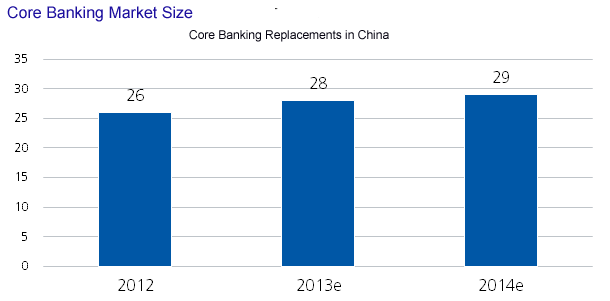Core Banking Solutions for Small and Midsize Banks in China: 2013 Update
Abstract
During 2011-2013, all four of China’s state-owned commercial banks, 40% of joint-stock banks, and more than 20 city banks upgraded or changed their core systems.
Competition among banks has become fierce. Most banks are trying to gain competitive advantage by differentiating and innovating. In addition to traditional trends such as improving risk management and optimizing payment services, banks were hoping that core systems would see some breakthroughs in areas such as Internet banking, liberalization of interest rates, and small and microloans. In the report Core Banking Solutions for Small and Midsize Banks in China: 2013 Update, Celent examines the reasons for upgrading, core banking IT spending, SaaS core banking applications, and other trends.

“There are 100+ city banks in China, and many of them are newly established. The IT infrastructure of city banks is very weak,” says Hua Zhang, Analyst with Celent’s Asian Financial Services Group and author of the report. “Fifteen city commercial banks in Shandong province formed an alliance to build a SaaS-based model core banking system that provides services such as data operation and maintenance and payments settlement.”
This report provides an overview of China’s core banking market, profiles the new core banking cases, and discusses how the new systems are supporting banks’ business strategies.

